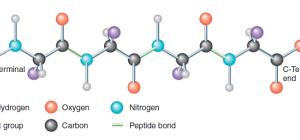Is there such a thing as a “travel gene?” This is the question that a certain cadre of scientific researchers are keen to resolve and the rest of us pretty much already know how to answer.
If you look back at your personal history and see a lifelong love for exploration and travel, you may be a member of the estimated one-fifth of the population that possesses what is now being called the “wanderlust gene.” In this article, learn what the data says about why some people are confirmed homebodies and others simply can’t stay put.
Introducing DRD4-7r

DRD4-7r is a derivative form of a gene everyone has called DRD4. DRD4 is a dopamine receptor gene. According to the Genome News Network, DRD4 could be voted the gene “most likely to vary.” Linked to personality, activity, attentiveness, curiosity, restlessness, risk-taking and similar traits, DRD4 plays a hand in helping us perceive what we want and take action to get it.
One such variable of DRD4 is DRD4-7r. DRD4-7r is the variant now being nicknamed the “wanderlust gene.” For those whose preferred form of risk-taking and curiosity satisfaction involves seeing new places, meeting new people and setting out without an itinerary or a destination in mind, it is now suspected that DRD4-7r is at the root.
The Genetic Basis for Wanderlust

Intriguingly, it is also thought that the estimated 20 percent of the population possessing the DRD4 variant DRD4-7r have evolved from a lineage where travel was required or simply encouraged.
For example, let’s say that a person who possesses the DRD4-7r gene participates in a research study, such as the1999 study by Chuansheng Chen. In this study, it is found that individuals whose ancestors regularly made long-distance treks, whether to find food or to colonize new areas or simply because they were nomadic in nature, were more likely to have the DRD4-7r gene.
Upon further investigation during the one-to-one interviews later on, it is discovered that this person has a lifelong love of travel. The researchers are delighted but (of course) not surprised.
Measuring the Distance From Africa

The reigning theory of human evolution has our earliest ancestors making their start in the region which is now modern day Africa. For this reason, a part of researchers’ working hypothesis is that those individuals whose ancestors migrated farther away from their African homeland will have a higher incidence of both DRD4-7r and another variant of DRD4, DRD4-2r.
As these folks’ ancestors trekked, trekked and then trekked some more, new land is likely not all that they discovered. In another ground-breaking study spearheaded by Garret LoPorto, new evidence highlights that early homo sapiens’ paths eventually intersected with that of their warlike neighbors, the Neanderthals.
Meet the Neanderthals
Not surprisingly, after this initial meet and greet, comingling quickly followed, with the outcome that a certain segment of modern humanity still carries the evidence of this cross-breeding in their genome. For individuals today whose genome reveals they carry Neanderthal genes, it is highly likely they hail from at least mildly migratory ancestors.
In fact, the more Neanderthal is present in an individual’s genome, the more likely they are to also carry DRD4-7r and DRD4-2r and be highly mobile themselves. As well, there is a much higher likelihood that the individual will be creative, innovative, a natural leader and motivated by the opportunity for national and international travel.
This is because Neanderthals are now known to have literally craved mental and physical stimulation. They were intensely creative, architects of many new tools and processes. They were also intensely aggressive, to the point where they may have fought for the sheer joy of it rather than for any other greater purpose. As a people who thrived on the new, the unknown and the risky, it is now thought that these traits live on in modern humans who carry a greater proportion of Neanderthal in their gene pool
By understanding more about our human origins and ancestry, as well as how the human brain recognizes, seeks and processes pleasure and reward, it becomes possible to better understand modern day differences between different populations. As of today, it is estimated that approximately 80 percent of modern humans are more risk-averse, content to remain in place and act as a stabilizing influence in society. The remaining 20 percent have permanent wanderlust, and these are society’s trailblazers – modern-day pioneers who continually search for new lands on behalf of us all.







